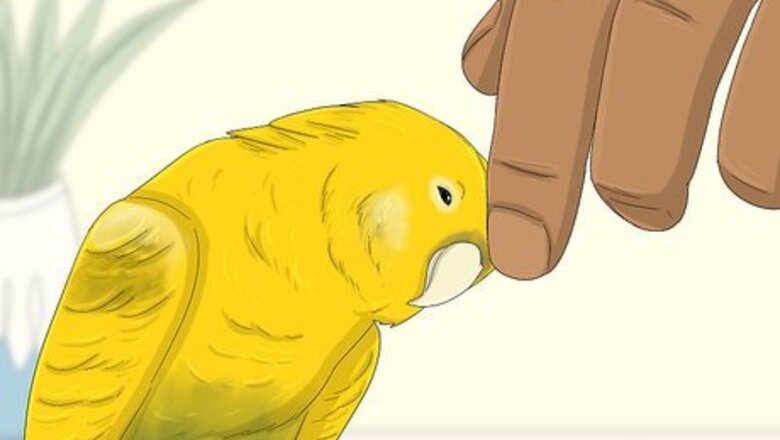
views
- Watch for the most obvious signs of an affectionate budgie, like cuddling or preening you, as well as tail wagging.
- Look for more subtle signs that indicate general comfort, like self-preening, singing, and a relaxed or slightly puffed-up posture while dozing.
- Give your budgie a little space if they growl, pant, fan their tail feathers, or bite you when you approach.
Positive Budgie Body Language
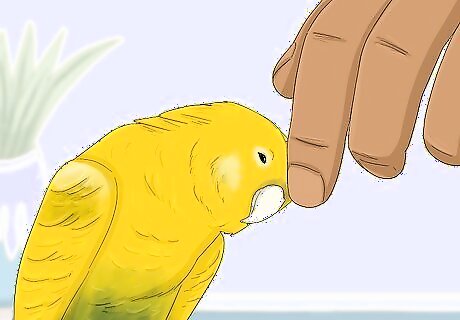
Cuddling and touching Cuddling is a clear indicator that your budgie likes you and wants to bond with you. If your bird gently nuzzles against your hand, climbs around on your body, grooms you with their beak, and rubs against your neck, it’s safe to say that your budgie likes you and feels safe around you.
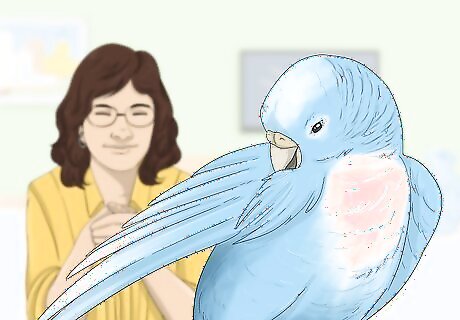
Self-preening Budgies only preen—or groom themselves by distributing oil from their beaks onto their feathers—when they feel comfortable. If you’re in the same room as your budgie and they start to preen their feathers, they’re most likely content and comfortable in your presence. A healthy budgie has vibrant, shiny, and clean feathers, which means they’ve been preening adequately.
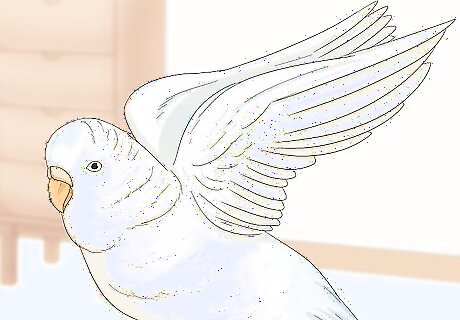
Wing flapping We typically think of a bird's wings as being an instrument of flight, but many birds, including budgies, use their wings as a sort of body language. If your budgie is flapping their wings while stationary, that’s a positive sign. Wing flapping is one way budgies display happiness around humans. Note that droopy or lethargic wings may be a sign of illness, and wing “flipping,” or short, sharp movements is a sign of annoyance or agitation.
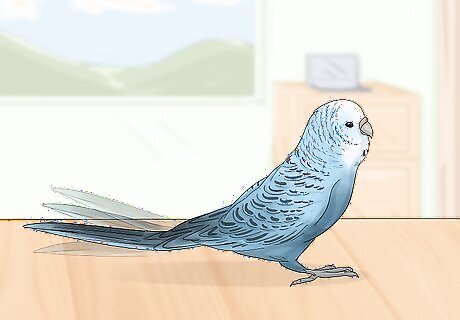
Tail wagging Many birds wag their tails a bit like dogs, and just like in dogs, it’s a sign of an excited, happy, or content budgie. Just as your budgie's wings can be an indication of happiness, so too can his tail feathers. Similarly, flipping the tail up and down with quick movements is also generally considered an indication of happiness. Tail wagging also sometimes comes right before your bird relieves themself, so make sure you’re interpreting it correctly. A fanned-out tail, on the other hand, is often a sign of aggression, or a defensive behavior.
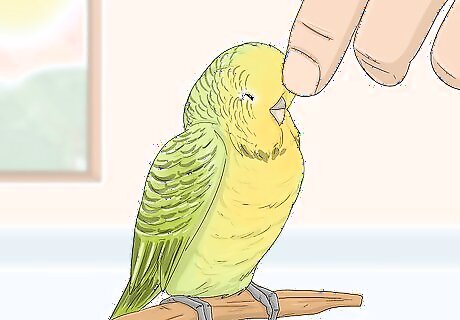
Relaxed posture The way your budgie carries himself around you can tell you a lot about how he feels in your presence. That said, posture is just one piece of the puzzle, so look for other signs on top of these: A bird in a relaxed, non-rigid posture is typically happy and comfortable around their human. Also, a budgie that’s puffed-up with their head tucked is often sleepy and feels safe. A bird that "bows" their head—crouching down with their head "pointed" toward their human—is comfortable around that person and may be requesting a head scratching or petting.
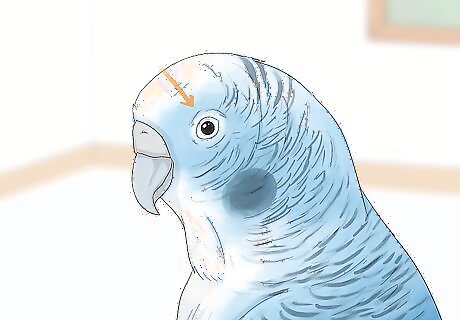
Dilating pupils A budgie's pupils can change in size as a physical reaction to the bird's mood and environment. Flashing (the widening of the pupils) and pinning (the narrowing of the pupils) are controlled by the bird, and typically indicate excitement or pleasure. If your budgie's eyes flash and pin when he sees you, it is most likely an indication that he likes you and values your company. On the other hand, when dilating pupils are accompanied by lunging or other aggressive behavior, it’s often negative body language.
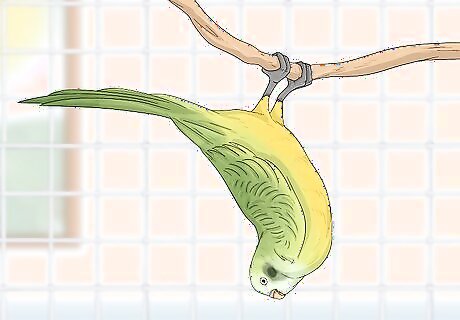
Hanging upside down Hanging upside down is a common practice for birds. It is typically done when birds are happy and feel safe, as the position tends to leave the bird vulnerable, though it gives them a better vantage point on what’s below. If your bird hangs upside down in your presence, it may be a sign that he likes you and trusts you.
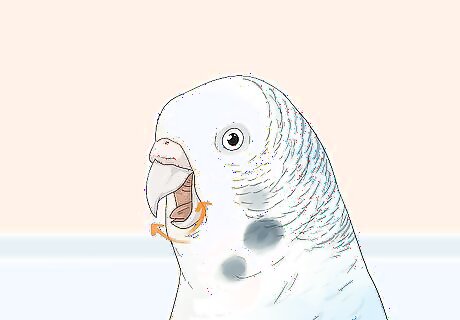
Beak movements Budgies use their beaks for a variety of purposes, from physical tasks to conveying messages. If your bird is performing any of the following activities, it is typically a sign of happiness and comfort around you: Beak grinding, or scraping their upper beak across their lower beak, is a sign your budgie feels safe. They most often do it just before settling in to sleep. Mouthing with the beak, without actually biting, is one way budgies play with one another. If your bird is gently mouthing you with his beak, without actually trying to bite you, it is probably a sign of affection. Regurgitating in front of or "at" a person is a sign of tremendous affection. This is particularly true if your budgie displays signs of eye pinning and head bobbing immediately before regurgitating.
Positive Budgie Vocalizations
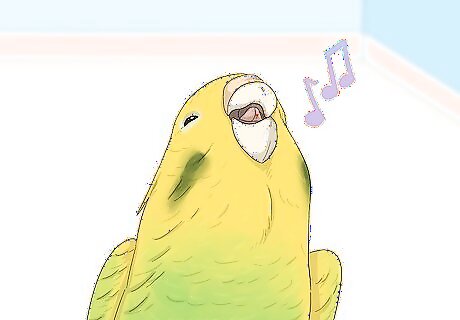
Talking, singing, or whistling These 3 vocalizations are a common sign that your budgie is content and happy in your home. If your bird is very vocal, particularly when you walk into the room, it is a good sign that your bird likes you.
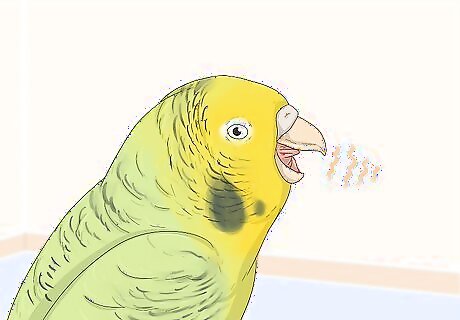
Chattering and purring Beak chattering and purring are not always loud; some birds make these sounds softly and silently. No matter how your bird chatters and purrs, it is typically a sign that they are content and want to interact or play with you. Sometimes a chattering budgie also “barks,” which is an attempt to show dominance. It’s not necessarily a bad sign, but it can indicate some stress. Note that low growling, on the other hand, is often a warning sign of aggression, and usually means your budgie wants some space.
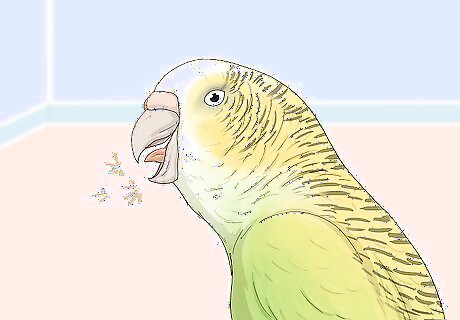
Tongue clicking One way budgies express that they would like to be picked up or petted is by clicking their tongues against their beaks. If your budgie clicks his tongue around you, it is usually a sign that he likes you and wants you to interact with him more.
Negative Budgie Behaviors
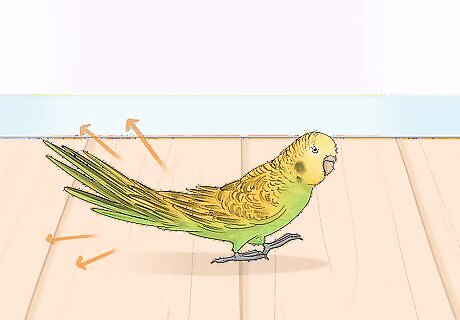
Growling or panting Budgies are very expressive, and will often tell you if they’re uncomfortable. Some of the most common signs of this include low growling, panting, crouching with their feathers expanded, or lying on their back with their beaks open. Other signs include: Marching toward you with their head down to intimidate you. Marching is a positive behavior if their head is perked up, however. Fanning their tail wide, which means your budgie is upset or aggressive. Shaking or quivering, which indicates a nervous or scared budgie.
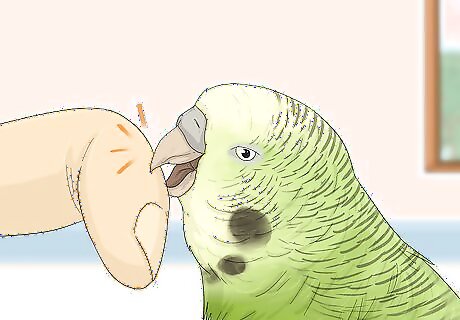
Aggressive biting Biting in budgies is a complex behavior. When paired with other negative signs, it’s most likely an aggressive display. But budgies also use their mouths as appendages to grip things, or even softly bite things to show affection. Keep a close eye on other body language to tell which is which. A budgie may even train you by biting you to discourage your own behavior. It doesn’t necessarily mean they don’t like you, just that they want you to stop doing whatever it is you’re doing.
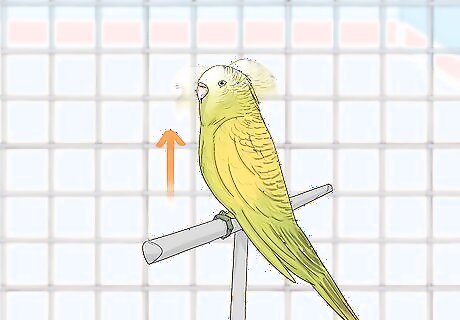
Rigid body posture Any kind of rigid body posture, usually accompanied by ruffled feathers and a restless, side-to-side movement, typically indicates discomfort, displeasure, or a lack of trust around a human. If your bird behaves in this manner, it's best to give them space. It could mean they either haven’t gotten comfortable around you yet, or doesn’t like something that you are doing. Note you own action and avoid that trigger in the future.
Helping Your Budgie Bond with You
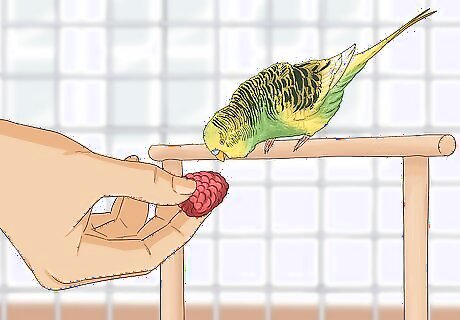
Make sure your bird's physical needs are met. A happy and loving budgie starts with taking proper care of them. Always be sure that your bird has a dish of ample, clean drinking water, and be sure to feed them by keeping their food dish full of fresh birdseed formulated for budgies. For a complete and balanced diet, make sure your bird has access to seeds, grains, beans, vegetables, nutritious pellets, and occasional fruit. Also provide your budgie with cuttlebones, which offer them calcium and a way to grind down their beak. Never give your bird chocolate, avocado, salty foods, garlic, onion or any human snack foods.
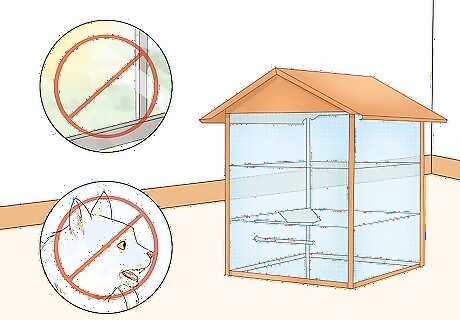
House your budgie in a roomy enclosure away from disturbances. Your bird views their cage as a home within your home. Without a secure home, they won’t ever drop their guard or be affectionate. Ensure their cage is big enough, with plenty of enrichment, and away from threatening things like other animals, loud noises, or erratic foot traffic. Budgie cages should be at least 14 in (36 cm) deep, 16 in (41 cm) tall, and 17 in (43 cm) wide, but even larger cages are recommended. Also keep the cage away from direct sunlight and out of reach of small children.
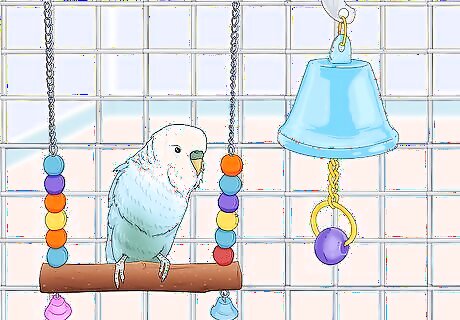
Give your budgie plenty of toys to keep them amused. Budgies love to play and need plenty of mental stimulation. Providing your bird with fun, challenging toys will make them happy and content. Install budgie-specific perches in their cage at varying heights to give them lots of verticality and room to explore. You might also consider installing a swing for a fun, moving perch. Get your budgie toys that are safe to chew on in a variety of shapes and sizes. Look for toys with wooden components, or solid, sturdy beads that can be bitten and chewed.
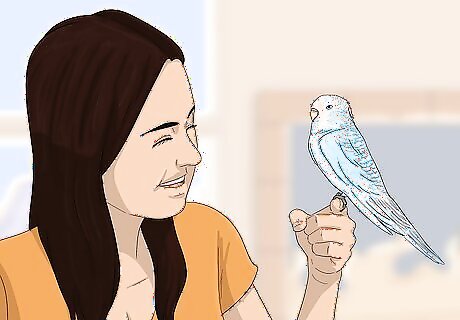
Interact with your budgie gradually, taking small bonding steps. A budgie’s trust needs to be earned slowly. Start by simply sitting quietly near their cage. Once they appear comfortable, offer them food or treats through the bars. Then, deliver treats through the open door of the cage. After, let your budgie explore the room outside the cage, while keeping a close eye on them. While around your budgie, speak in a calm, soft voice to get them used to your presence. Avoid forcing your budgie to do anything they don’t want to, like stepping onto your finger. Pushing them only erodes their trust in you.













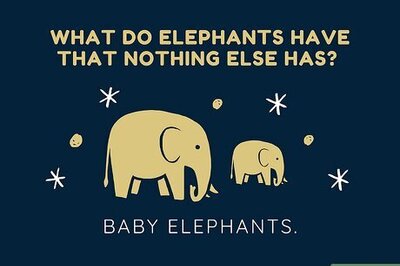
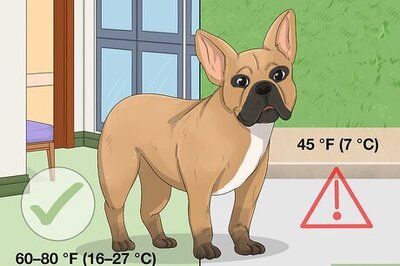
Comments
0 comment